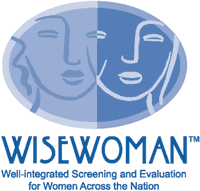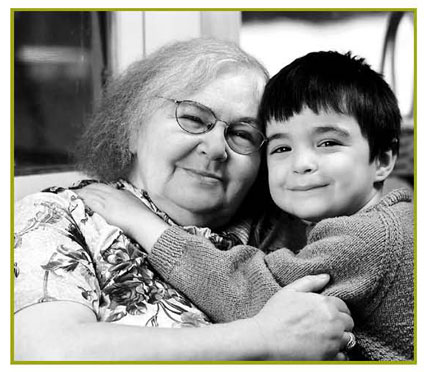|
|
|||||||||||||
|
|
|
|
|
||||||||||
|
|
|
|
|
|
WISEWOMAN
| ||||||||||||||||||||||||||||||||||||||||||||||||||||||||||||||||||||||||||||||||||||||||||
 |
Heart disease and stroke are among the most widespread and costly health problems facing our nation today, yet they are among the most preventable. Cardiovascular diseases, specifically heart disease and stroke, are the first and third leading causes of death for both men and women in the United States. They account for nearly one-third (35.3%) of all American deaths. Although heart disease is commonly thought to affect men more than women, in reality, more than half of all people who die of heart disease and stroke are women. At particular risk are women with low incomes. Cardiovascular and other diseases can be found and treated through health screenings for high blood pressure, high blood cholesterol, diabetes, and tobacco use. Many uninsured and underinsured women; however, cannot afford these preventive screenings.
|
CDC’s WISEWOMAN program provides cardiovascular disease risk factor screenings, healthy lifestyle programs, and health care referral services to uninsured and underinsured women aged 40–64 years. To be eligible, participants must first be enrolled in CDC’s National Breast and Cervical Cancer Early Detection Program. With Fiscal Year 2008 appropriations of $18.6 million, CDC currently funds 21 WISEWOMAN programs, operating in 19 states and 2 tribal organizations.
The WISEWOMAN program is able to provide these critical screening and lifestyle services to more than 84,000 women, just under 3% of the women who participate in the National Breast and Cervical Cancer Early Detection Program. It is important to note; however, that the Breast and Cervical Cancer program only reaches approximately 15% of the eligible uninsured or underinsured women with low incomes.
Local programs provide preventive health services that include testing for high blood pressure, high blood cholesterol, and diabetes. Program participants receive referrals to local health care providers as needed. CDC WISEWOMAN programs partner with community-based organizations to help expand the reach of their services and coordinate patient health care referrals.
 Since 1995, the WISEWOMAN program has screened more than 84,000 women. Most
WISEWOMAN participants have risk factors for heart disease and stroke.
Between January 2000 and June 2008, WISEWOMAN participants were found to
have the following health risk factors:
Since 1995, the WISEWOMAN program has screened more than 84,000 women. Most
WISEWOMAN participants have risk factors for heart disease and stroke.
Between January 2000 and June 2008, WISEWOMAN participants were found to
have the following health risk factors:
In addition to clinical screenings and referrals, WISEWOMAN participants can take advantage of healthy lifestyle counseling and interventions tailored to address their identified risk factors.
Health providers work with women to manage their high blood pressure, high blood cholesterol and diabetes, and quit tobacco use. They provide continued support to help women make changes that will improve their diets and physical activity level and stop smoking. Participants receive help in setting health goals, developing social support networks, and applying heart-healthy strategies to everyday situations. Although services may vary from program to program, they are designed to promote lasting, healthy lifestyle changes among women.
By having access to screening services, many women learn for the first time that they have high blood pressure, high blood cholesterol, and/or diabetes. The lifestyle intervention services have resulted in the reductions in risk factors such as cardiovascular disease and tobacco use.
[A text description of these graphs are also available.]
|
Because WISEWOMAN works within the local health care community, the program provides an opportunity for CDC to explore new methods for promoting cardiovascular health by creating a bridge between community-based organizations and health care delivery, which improves and extends clinical systems of care. The WISEWOMAN program offers the opportunity to simultaneously work at the broader public health and individual levels. Ongoing lessons learned from this combined approach are shared broadly with chronic disease prevention programs and will add to the knowledge base to inform upcoming health care reform initiatives.
A new 5-year funding period began in June 2008, with six new WISEWOMAN programs added after a competitive application process. The program will continue to produce measurable outcomes.
 WISEWOMAN program priorities are to
WISEWOMAN program priorities are to
|
In Nebraska, heart disease and stroke are the number one and number three causes of death among women, who account for 50.5% of the state’s total population. Since the Nebraska WISEWOMAN program began in 2000, more than 19,000 women with low incomes have been screened for major risk factors of heart disease and stroke, including obesity, high blood pressure, high blood cholesterol, and diabetes. When risk factors are found, participants are offered medical referrals as needed and ongoing healthy lifestyle counseling and intervention support.
One half of Nebraska's 1.7 million residents live in three urban counties. The other half live in rural areas of the state. Compared with the U.S. population of 79.6 persons per square mile, Nebraska has only 22.3 persons per square mile. This poses a challenge for the Nebraska WISEWOMAN program in reaching women with cardiovascular disease screening and lifestyle intervention services. To meet these challenges, the program has set up a network of regional lifestyle interventionists, who contact participants by phone for 4 consecutive months.
These lifestyle interventionists provide tailored counseling and tools to clients, based on their identified health risks, and support women as they increase their physical activity, improve their diets, and quit using tobacco products. In addition to the contacts, clients receive a set of self-directed materials and related incentives. Nebraska has successfully screened more than 19,000 underserved women despite a vast geographic span. With regional systems in place, risk reduction screening and education is available to those in need and ultimately reduces the number of deaths from heart disease, stroke, and associated chronic diseases.
[A text description of this map is also available.]
CDC funded the Minnesota Department of Health in 2004 to include WISEWOMAN programs in local Breast and Cervical Cancer Early Detection Program provider sites. Since that time, the WISEWOMAN program—known in Minnesota as SagePlus—has grown from 3 to 10 provider sites. Additional state funding sources have enhanced the services offered to eligible women in need.
It is projected that by the year 2015, Minnesota’s Hispanic/Latino population will increase by 98%. In 2004, over one-third (34.2%) of this population was uninsured, compared to 7.4% of the state’s total population. To reach this growing segment of the population, the Minnesota Department of Health launched a WISEWOMAN (SagePlus) program in the heart of St. Paul’s Hispanic/Latino community, providing screenings and prevention services in an area where 96% of the clients do not have health insurance.
The WISEWOMAN program is identifying risk factors early, before disease appears, and is providing women with the tools they need to improve their health in the future. Since opening in 2007, this WISEWOMAN (SagePlus) location has screened nearly 300 women—80% of whom identified themselves as being of Hispanic/Latino descent. Forty percent of the women participated in the lifestyle education or interventions, and 30% receiving screening services have joined a physical activity program.
Since the program began in 1995, WISEWOMAN has achieved the following:
Worked with over 84,000 women to reduce their risk for
heart disease, stroke, and other chronic diseases.
Demonstrated a reduction in participants’ overall risk for cardiovascular disease, including
5.4% reduction in 10-year estimated chronic heart disease risk.
7.6% reduction in 5-year estimated cardiovascular
disease risk.
Identified women at risk for heart disease and stroke. From January 2000 through June 2008, the program found new cases of previously undiagnosed risk factors:
High blood pressure in 7,674 women.
High cholesterol in 7,928 women.
Diabetes in 1,140 women.
Addressed barriers to health screening services for women. Of the participants served:
35% were from racial and ethnic minority populations.
All were in families with incomes below 250% of the federal poverty level.
All were either uninsured or underinsured.
Translated the science of prevention into culturally appropriate, multilanguage educational tools to meet the needs of its diverse participants.

|
![]() One or more documents on this Web page is available in Portable Document Format
(PDF). You will need Acrobat
Reader (a free application) to view and print these documents.
One or more documents on this Web page is available in Portable Document Format
(PDF). You will need Acrobat
Reader (a free application) to view and print these documents.
Page last reviewed: April 22, 2009
Page last modified: April 22, 2009
Content source: National Center for
Chronic Disease Prevention and Health Promotion
|
|
|
||||||||||||
|